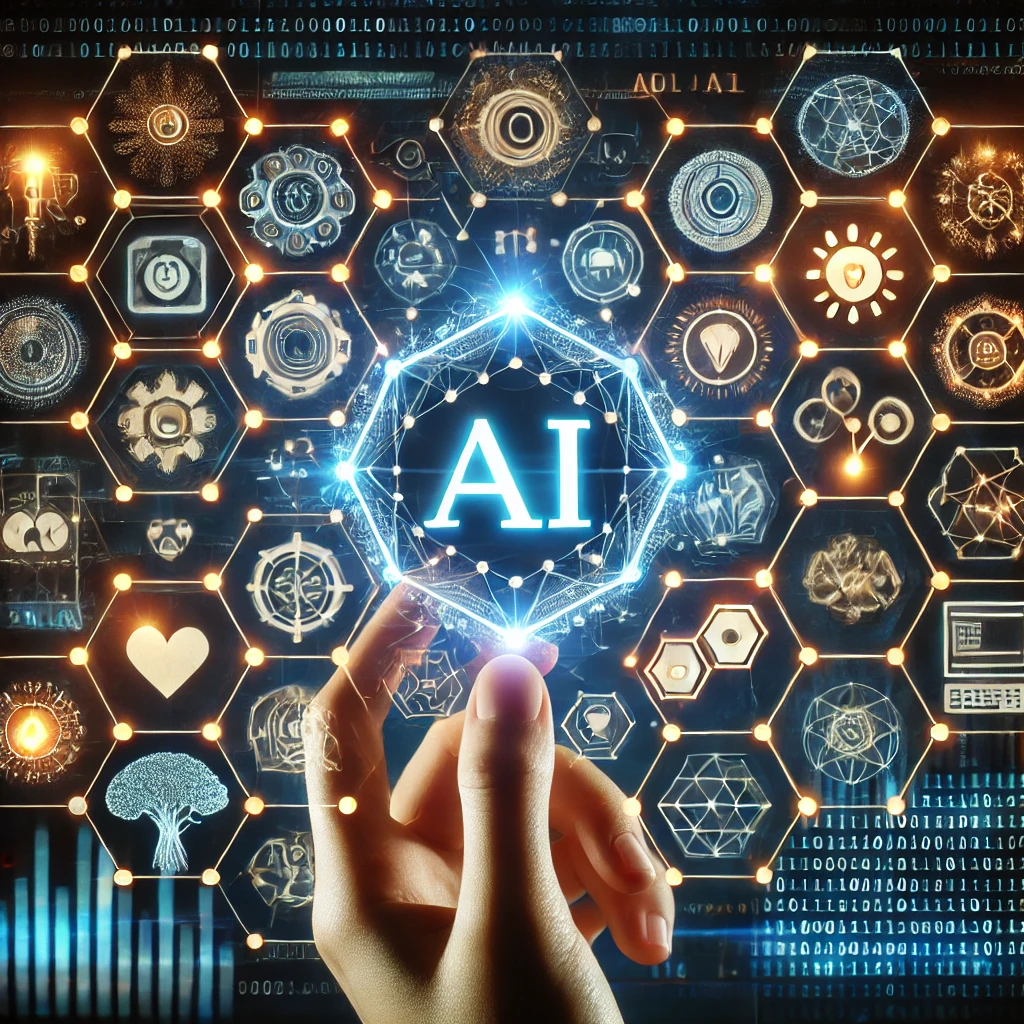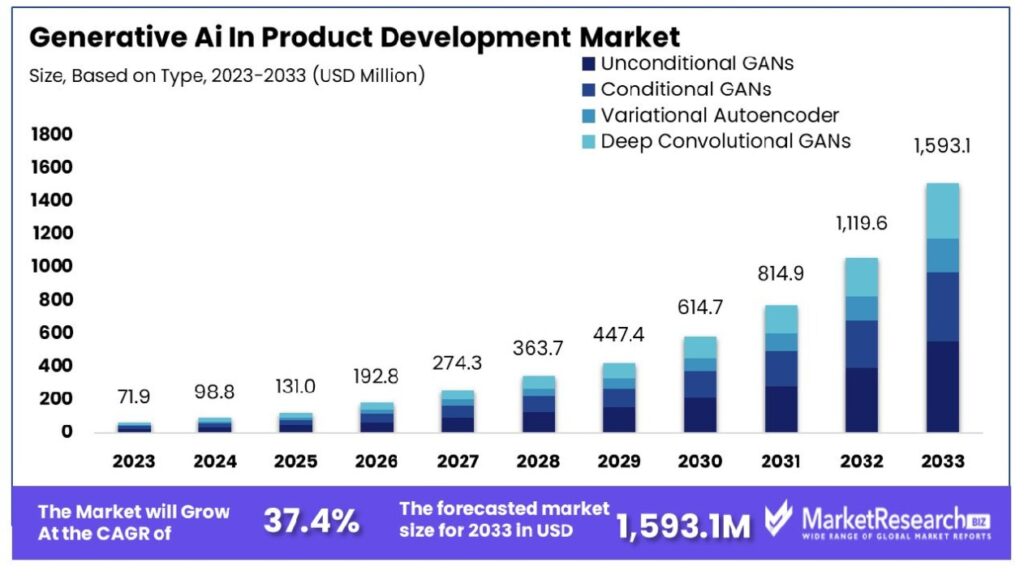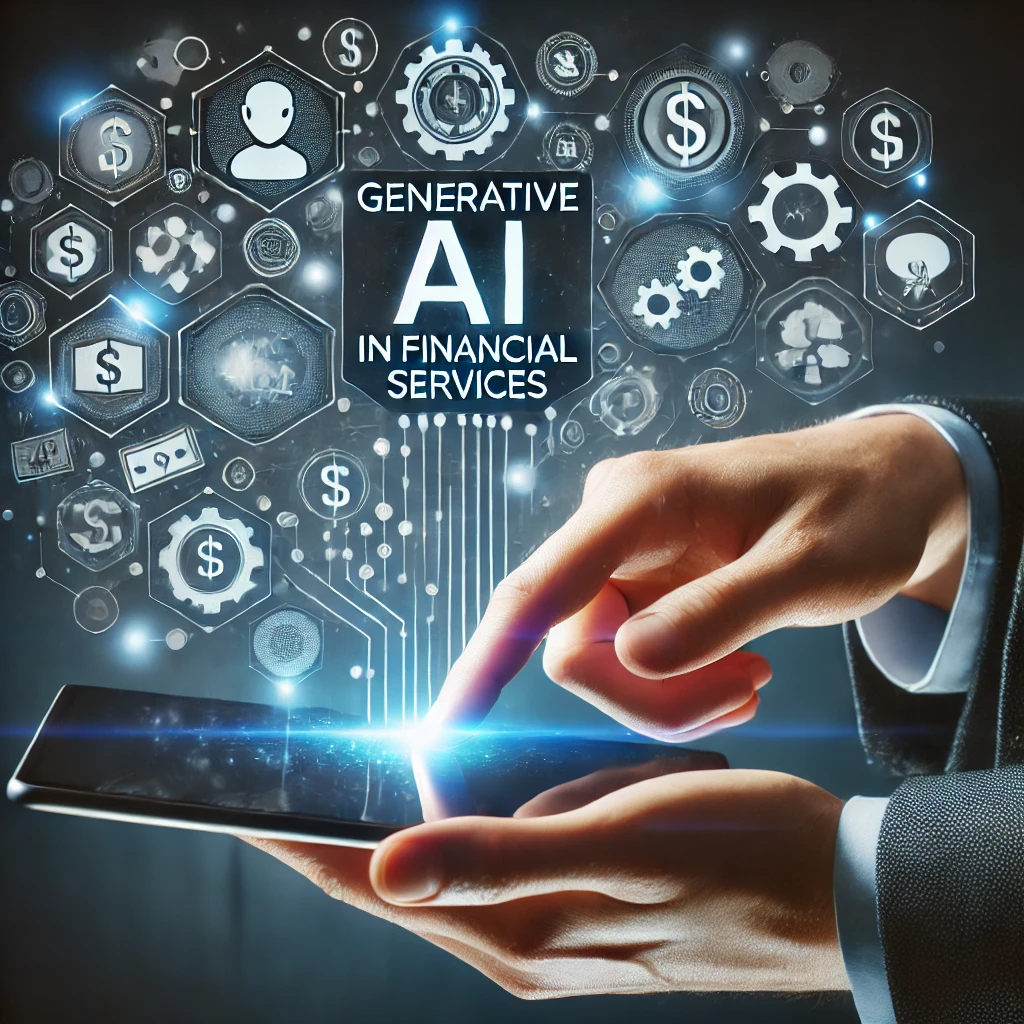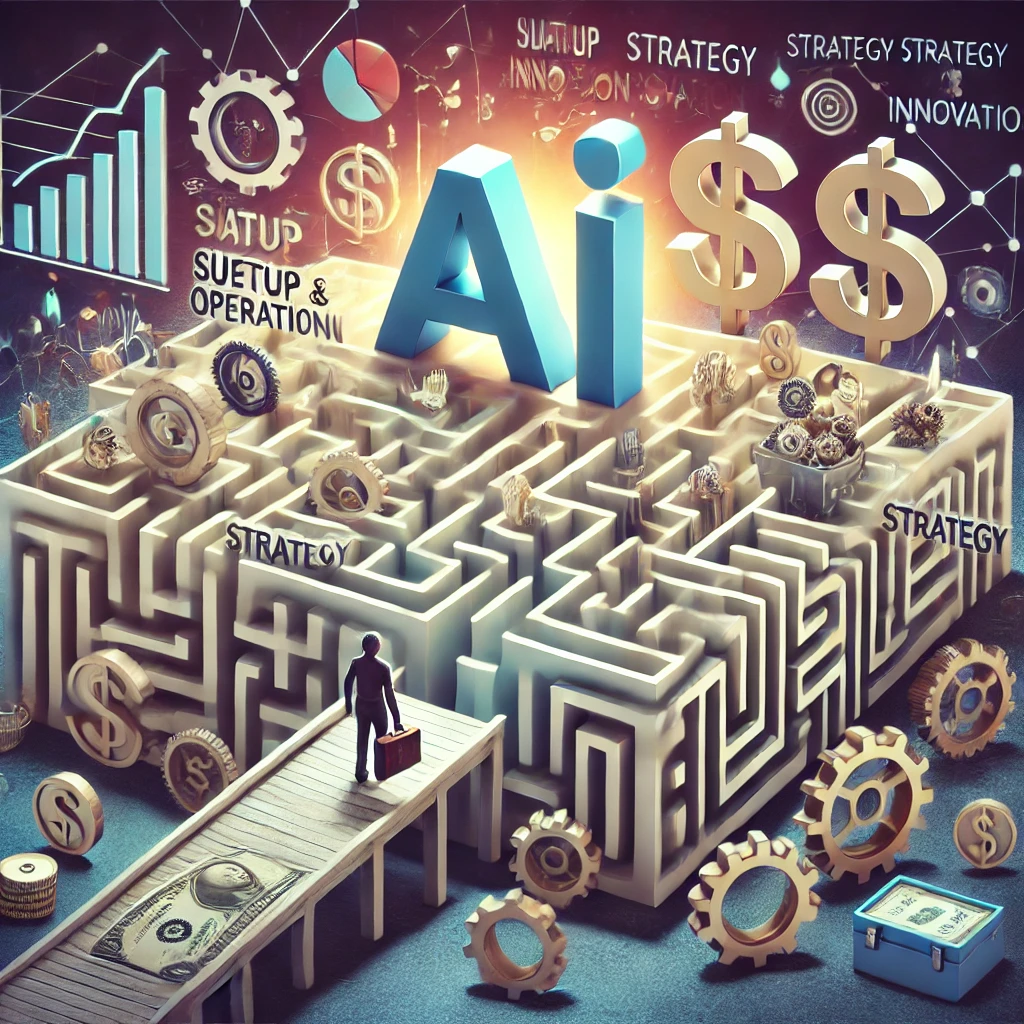Generative AI can create a unique work of art, draft a compelling story, or design an innovative product prototype—all without human intervention. That’s no longer an imagination. Generative AI pushes the boundaries of what’s possible, blending creativity with computation in ways that are both thrilling and unsettling. As businesses and creatives alike begin to explore its potential, one can’t help but wonder: What will generative AI create next, and how will it change the world? The possibilities are as limitless as they are intriguing, setting the stage for a revolution in how we conceive, create, and innovate.
Understanding Generative AI

Figure 1: Understanding Generative AI
Generative AI refers to a class of artificial intelligence systems designed to create new content based on the patterns and data it has been trained on. Unlike traditional AI, which typically follows predefined rules or performs specific tasks, generative AI can produce text, images, music, code, and even entire virtual environments. The technology behind generative AI models like GPT-4 (Generative Pre-trained Transformer 4) and DALL-E leverages deep learning techniques, particularly neural networks, to understand and mimic the complexities of human language, visual art, and other forms of creative expression.
These models are trained on vast datasets, allowing them to learn the structure and nuances of the content they generate. The core of generative AI lies in its ability to innovate and create, making it a powerful tool across various industries. Its applications are not limited to artistic endeavors but extend to practical business solutions that enhance efficiency, creativity, and customer engagement.
Use Generative AI in Your Business
Implementing generative AI across your business can be diversified to meet specific departmental needs, ensuring that each area benefits uniquely from its capabilities.
📍 Marketing and Advertising
Generative AI is transforming how marketers engage with audiences, enabling the automated generation of content that is deeply personalized and scalable. AI tools can analyze customer data and generate tailored advertisements, social media posts, and even entire campaigns that resonate with individual consumer preferences.
Beyond content creation, generative AI is also enabling dynamic content generation, where advertisements change in real-time based on user interactions and preferences. This technology allows for a level of personalization that was previously unattainable, driving more effective and efficient marketing strategies.
Creative agencies are also harnessing AI to generate a multitude of ad variants, rapidly A/B testing them to identify the most effective versions, thus significantly reducing the time and cost associated with traditional campaign development. By integrating AI, businesses can enhance their marketing efforts with precision and creativity that scales with their audience.
📍 Product Design and Development
According to Market Research Biz, the global Generative Ai in product development market was valued at USD 71.9 million in 2023. It is expected to reach USD 1,593.1 million by 2033, with a CAGR of 37.4% during the forecast period from 2024 to 2033.

Figure 2: Generative Ai in Product Development Market Size and Forecast
Data Source: Market Research Biz
In the fashion industry, AI is being used to generate new designs based on current trends, historical data, and consumer preferences, allowing brands to stay ahead of the curve with innovative products. AI-powered tools can also enable designers to visualize and iterate on product ideas more quickly and creatively, bridging the gap between concept and prototype.
Moreover, generative AI can predict potential manufacturing challenges and suggest design modifications to reduce production costs and time-to-market. This not only enhances efficiency but also allows for rapid iteration, enabling businesses to respond swiftly to changing market demands and consumer preferences.
📍 Customer Service
AI-driven chatbots and virtual assistants are now capable of handling complex queries, understanding natural language, and providing contextually relevant responses. It can anticipate customer needs and offer proactive support. For example, AI systems can analyze customer behavior and transaction history to predict potential issues before they arise, offering solutions or recommendations that enhance the customer experience.
AI-driven customer service platforms are also increasingly integrated with omnichannel support, allowing seamless interactions across chat, email, voice, and social media. This unified approach ensures that customers receive consistent and personalized service, regardless of the channel they choose. Using AI in customer service enhances client satisfaction and reduces operational costs by automating routine tasks, allowing human agents to address more complex challenges.
For a deeper understanding of customer service enhancements, check out our other blog post: Scaling customer support with data chat: Strategies for managing high volumes of interactions
📍 AI in Financial Services: Risk Management and Forecasting

Figure 3: The Transformative Power of Generative AI in Financial Services
The financial services industry is leveraging generative AI to enhance risk management and forecasting. AI algorithms can analyze vast amounts of financial data in real time, identifying patterns and anomalies that might indicate potential risks or opportunities. Hedge funds and investment banks are now using AI to develop predictive models that can forecast market trends with greater accuracy than traditional methods.
In risk management, AI is being used to assess creditworthiness, detect fraudulent activities, and monitor compliance with regulatory requirements. AI systems can process and analyze unstructured data, such as news articles or social media posts, to gauge market sentiment and predict the impact of geopolitical events on financial markets. This allows financial institutions to make more informed decisions and mitigate risks more effectively.
AI is also enhancing personalized financial advice by analyzing individual client data and providing tailored investment recommendations. This level of personalization improves client satisfaction and helps financial advisors manage their portfolios more efficiently. As AI continues to evolve, its applications in financial services are expected to expand, offering new ways to enhance performance and manage risks in a rapidly changing environment.
Challenges of Deploying Generative AI in Business Operations
Adopting generative AI within business operations presents a series of substantial challenges that organizations must navigate to leverage this innovative technology effectively.
📍Securing Sensitive Data
The power of generative AI largely depends on the breadth and depth of the data it processes, which often includes sensitive or personal information. This dependency poses significant privacy and security risks. Businesses must prioritize robust data protection measures, implement strict cybersecurity protocols, and ensure compliance with industry regulations and standards. Building a secure infrastructure and regularly updating it against emerging threats is crucial to safeguarding this data.
📍 Navigating High Setup and Operational Costs

Figure 4: Setting up generative AI systems involves considerable financial outlays.
Setting up generative AI systems involves considerable financial outlays, primarily for high-end computational resources required for training AI models. The costs extend to ongoing expenditures for skilled personnel, system updates, and maintenance, which can be daunting for small to medium enterprises. Exploring scalable cloud-based AI solutions and seeking financial partnerships can help alleviate some of these financial burdens.
📍 Bridging the AI Skills Gap
The complexity of generative AI demands specialized expertise in fields like machine learning and data science, skills that are in high demand but in short supply. To overcome this challenge, businesses can enhance their workforce capabilities through targeted training programs, partner with academia, or utilize platform solutions that simplify AI model development and deployment.
📍 Ensuring Ethical AI Use and Mitigating Bias
The propensity for AI systems to reflect or amplify biases in training data can lead to ethical concerns, impacting fairness and inclusivity. To combat this, organizations should employ diverse datasets, conduct thorough testing to identify biases, and develop AI applications within ethical frameworks established by cross-functional oversight teams.
📍 Streamlining AI Integration Within Existing Infrastructure
Incorporating generative AI into established systems and workflows presents logistical and compatibility challenges. Businesses should consider a step-by-step integration strategy, allowing for incremental adjustments and alignment with existing technological and process frameworks, thus minimizing disruption and maximizing the benefits of AI technologies.
Implementing Generative AI into Your Business
Incorporating generative AI into business operations can lead to transformative improvements in creativity, operational efficiency, and customer interactions. However, to realize these benefits, organizations must engage in meticulous planning, adopt a well-defined strategic approach, and have a thorough understanding of their specific goals for AI integration.
1. Define Clear Objectives and Use Cases: Identify specific problems or opportunities where generative AI can add value, such as automating content creation or enhancing customer interactions. Clear goals will guide implementation and measure success.
2. Assess Data Readiness: Evaluate your existing data’s quality, quantity, and diversity. Prepare it for AI training by cleaning and augmenting it to ensure it aligns with your AI objectives.
3. Choose the Right Technology and Partners: Choose the right AI platforms based on your resources. Consider in-house development or partnering with established AI firms to reduce technical demands and costs.
4. Develop or Acquire AI Expertise: Build or acquire AI expertise by training staff, hiring talent, or outsourcing. Foster AI literacy across the organization for smoother integration.
5. Implement Ethical and Responsible AI Practices: Ensure AI systems are transparent, fair, and compliant with laws and regulations. Regularly audit and update AI models to maintain ethical standards.
6. Monitor, Evaluate, and Iterate: Regularly evaluate AI performance against objectives. Use insights to adjust and expand AI functionalities as needed.
📌 Stay at the forefront of generative AI developments by following our LinkedIn page. We regularly share insights, updates, and pioneering advancements in GenAI, helping you keep your strategies cutting-edge. Join our growing community to engage with industry experts and access exclusive content tailored to enhance your understanding and application of generative AI.







